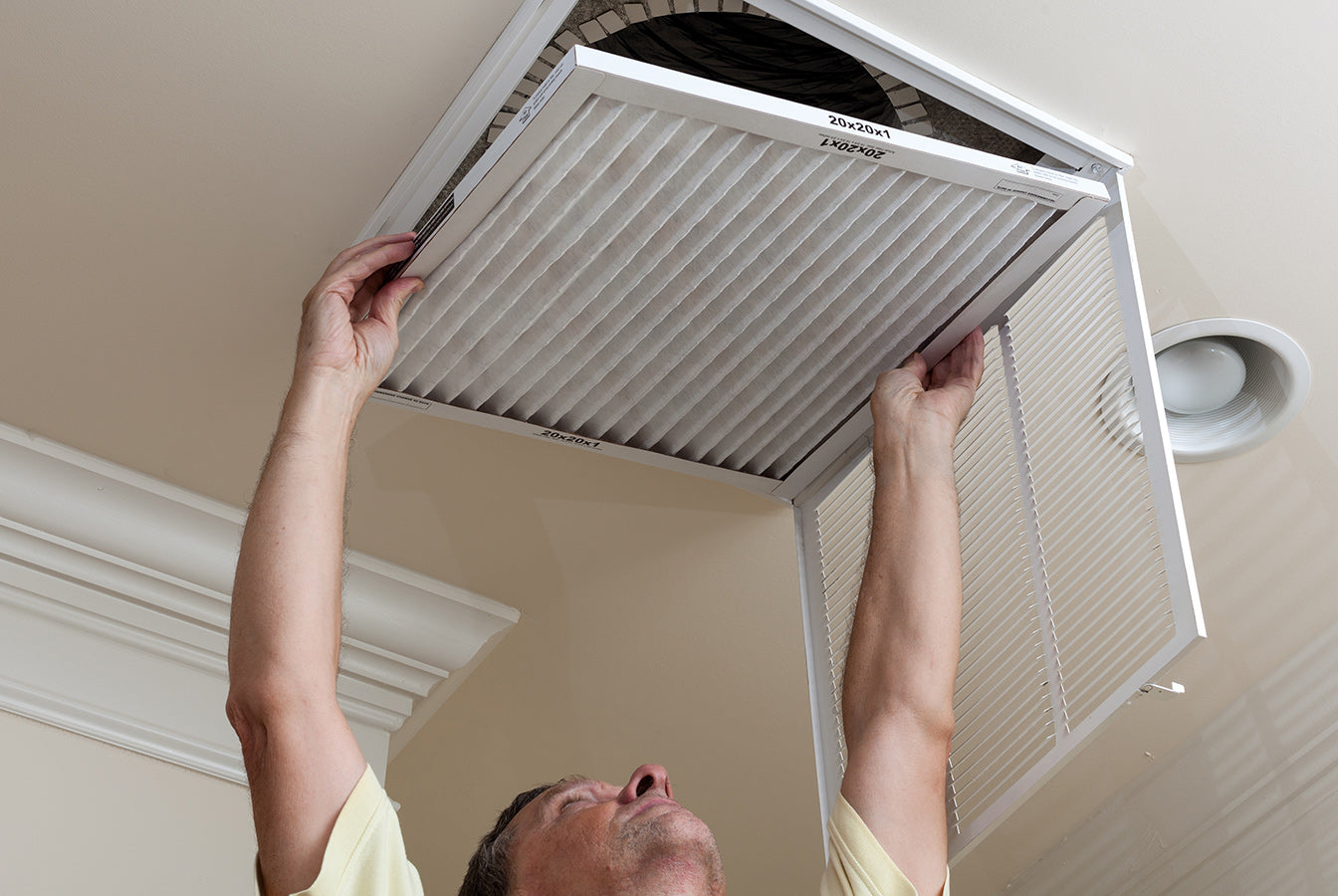Let’s set the scene: You’re standing in the aisle of your local hardware store, staring at a wall of furnace filters, trying to decode the mysterious language of numbers and dimensions. You double-check the size written on the dusty filter you dragged out of your HVAC system, and... nothing.
The exact size you need doesn’t exist. Did your furnace come from another dimension? (no pun intended here…) Where would these numbers even be? Relax—you’re not alone.
Finding the right furnace filter size can feel like searching for a needle in a haystack, especially if your HVAC system uses an uncommon size. The good news is there are solutions, ranging from custom filters to creative DIY tricks.
We’ll get into why filter sizes matter, the options available when you can’t find the right size, and how to ensure your home's HVAC system stays happy and healthy.
The Importance of Choosing the Right Filter Size
First things first: Why can’t you just cram any old filter into your system? It’s just air, right? Wrong. Furnace and AC filters are critical for both your HVAC system’s performance and the air quality in your home.
When you install a filter that’s too small or poorly fitted, gaps can let unfiltered air bypass the filter entirely. This happens because as you may know, air takes the path of least resistance… We’ll get into this a little later.
Anyway, this means dust, pet dander, pollen, and other bad allergens can circulate through your home, reducing air quality, increasing dust bunnies and potentially causing issues for allergy sufferers.
On the flip side, a filter that’s too large might not fit properly, forcing you to bend or damage it, which can restrict airflow and overwork your system.
In short: size matters, big time! Hold on, Chuck… We’re still talking about air filters here.
4 Tips to Finding Your Furnace Filter Size
Finding the right size furnace filter might feel like solving a puzzle, but it’s simpler than you think with the right approach. Whether you’re replacing an old filter or dealing with a new HVAC system, these steps will help ensure you get the perfect fit.
Check the Existing Filter
-
Measure the HVAC Filter Slot
If your existing filter is missing or unreadable, measure the dimensions of the filter slot inside your HVAC system. Use a tape measure to find the length, width, and depth of the space.
Round your measurements to the nearest whole number to determine the nominal size. For example, if the slot measures 19.75” x 24.5” x 1”, you’ll likely need a filter labeled 20” x 25” x 1”.
-
Verify the Thickness
Thickness is just as important as length and width. Most residential filters are 1 inch thick, but some systems use 2-inch or even 4-inch filters. All of Yoor Air’s filters are 1 inch and can also be used in 4” systems as the internal galvanized steel frame won’t allow it to get sucked into your unit.
Additionally, always remember to check your system’s manual or look at the existing filter for guidance on the proper thickness.
-
Consult the Manufacturer’s Specifications
If you’re still unsure, consult your HVAC system’s manual or look up the specifications online. The manufacturer will usually provide recommendations for filter size and MERV rating, which can help narrow down your options. Remember, higher MERV ratings are not always the best for your system.
The easiest place to start is with your current furnace filter. Most filters have their dimensions printed directly on the frame, something like 16” x 25” x 1” - as this is one of the most common filter size in homes across the US.
These numbers represent the length (16), width (25), and thickness (1) of the filter. Be sure to note whether these are “nominal” sizes (rounded up) or “actual” sizes (precise measurements). If you’re unsure, measure the filter yourself.
Differences in Furnace Filter Sizes
Filters come in a dazzling array of sizes, and the dimensions you see printed on the packaging are often “nominal sizes.” These numbers are rounded up to make your life easier—or so the manufacturers claim.
The actual size (called the “actual size”) is usually smaller. For instance, a filter labeled as 16” x 25” x 1” may actually measure 15.5” x 24.5” x 0.75”. Confusing? Absolutely.
Here’s where it gets trickier: not all HVAC systems are built with standard filter sizes in mind. While many systems use common sizes like 20” x 20” x 1” or 16” x 25” x 1”, others require something more specific.
Common sizes can range from smaller dimensions like 12” x 12” x 1” for compact units, to larger ones like 25” x 25” x 1” for high-capacity systems.
But if your system demands an unusual or in-between size—like 14” x 20” x 1” or 18” x 24” x 1”—you might feel like you’re embarking on a treasure hunt. These in-between sizes can be harder to track down in stores, especially if your local hardware shop doesn’t stock a wide variety of filters.
The challenges multiply if your system requires an uncommon thickness, such as 2-inch or 4-inch filters, which are less readily available than the standard 1-inch filters.
Unusual dimensions may leave you scouring specialty websites or wondering if you can modify a filter to fit. Rest assured, there are solutions to these problems, even if your filter size seems like it’s one of a kind.
Pros and Cons of Standard vs. Custom Sizes
| Standard Filters | Custom Filters |
| Pros: Readily available, affordable. | Pros: Perfect fit, no airflow issues. |
| Cons: May not fit all systems. | Cons: Costly, longer wait times. |
If you’re lucky enough to need a standard size, pat yourself on the back and grab one from our online shop, we’ll even ship it to you every 3 months so you never forget. But if your system is a little quirky, don’t worry, we’ve still got you!
Custom Filters: When You Can’t Find the Right Filter Size
So, you’ve scoured the store, checked online, and still can’t find a filter that fits. Here’s your game plan:
1. Order a Custom Filter
When your furnace filter size is as rare as a unicorn, custom filters are the way to go. Companies like Yoor Air specialize in creating filters tailored to your HVAC system’s exact dimensions.
The process is simple: measure your current filter (or the slot it fits into), input those measurements online, and voilà! Your custom filter arrives at your doorstep, ready to make your furnace purr like a kitten - (we have a Pet Whisperer Filter for that too! No, seriously!)
Custom filters are particularly handy if you have an odd-sized system or unique filtration needs, like allergy protection or pet dander reduction. Yes, they’re a little more expensive than standard options, but the perfect fit and peace of mind are often worth it.
2. Choose a Slightly Smaller Filter
If you can’t find a perfect match but don’t want to splurge on custom filters, opt for a slightly smaller size. For instance, if your system needs a 16.5” x 25.5” x 1” filter and only 16” x 25” x 1” is available, the smaller option can work.
Instead of using weatherstripping or adhesive foam tape to seal the gaps around the edges, check out any one of Yoor Air’s filters. Their self-sealing gasket extends beyond the filter slightly, getting a snug fit, so no dirty air blows around it.
3. Trim a Larger Filter
Feeling crafty? Some filters can be trimmed to fit your system. Pleated filters with cardboard frames are the easiest to modify. Use a box cutter or heavy-duty scissors to cut the filter down to size, making sure to keep the edges straight and clean.
Once trimmed, reinforce the cut edges with duct tape to prevent the filter from falling apart inside your HVAC system.
Word of caution: This DIY hack works best for filters that are just slightly too large. Trimming a filter down by several inches may compromise its structural integrity and effectiveness.
4. Consult an HVAC Professional
When in doubt, call in the experts. An HVAC technician can help you identify the best solution for your system, whether that’s sourcing a hard-to-find filter or upgrading your system to accommodate a standard size.
They can also check for underlying issues, like a mismatched furnace or improper installation, that might be contributing to your filter woes.
Keep Your System Running Smoothly
Finding the right furnace filter size can feel like solving a frustrating puzzle, but with the right approach, it’s a solvable problem. Whether you go the custom route, trim an oversized filter, or call in the pros, the key is ensuring your HVAC system gets the filtration it needs to keep your home comfortable and your air clean.
Remember: A little extra money to buy a custom filter that properly fits your HVAC unit can save you from costly repairs or poor air quality down the line. So take a deep breath (through a properly filtered HVAC system, of course) and get to work. You’ve got this!



